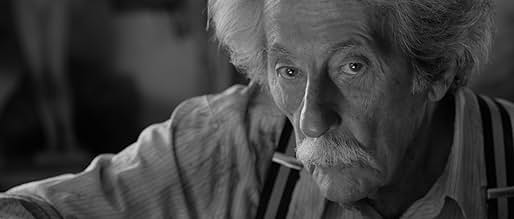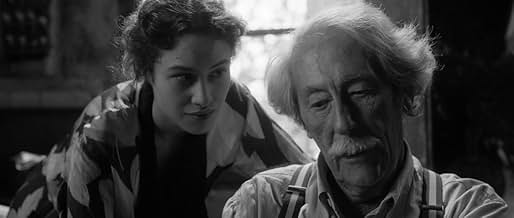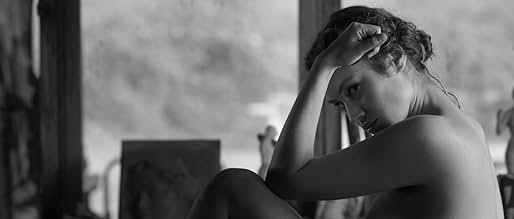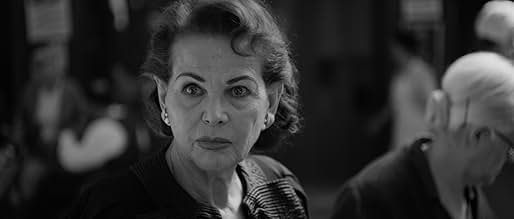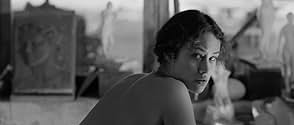Añade un argumento en tu idiomaIn 1943, a sculptor is inspired by a young woman who has escaped from a refugee camp.In 1943, a sculptor is inspired by a young woman who has escaped from a refugee camp.In 1943, a sculptor is inspired by a young woman who has escaped from a refugee camp.
- Dirección
- Guión
- Reparto principal
- Premios
- 3 premios y 26 nominaciones en total
- Cura
- (as Simon Guilbert)
Reseñas destacadas
This is a movie, a poem, about the existence of beauty and meaning in art, and in the life of an artist. in France during WWIL
This is an impossible subject for any movie—it demands too much be spelled out. The more obtuse, abstract, and indirect it is the better. Luckily that's where this movie tries to go. Where it fails is when it specifies its ideas. It sometimes states its wisdom. There is another better movie somewhere—not yet made—that could touch these ideas and imbue them with fullness without making it concrete. That one is the masterpiece.
In a way the fact I'm talking about this is proof that something happens here. It's a gorgeous, thoughtful movie. The old—very old—sculptor finds a young—very young— model and seems to come to life again. And in his work in these last years he finds something deep and lasting, or seemingly so. The model, in her own naive way, is actually more enriched than he is by all of this, and we see her enlightenment in small ways, even if on some level she doesn't care, not in the way the artist does.
But the artist is the center of things here, in a brilliant performance. His work, what they show of it in the movie (I speak as an artist and art historian), is pathetic and weak, and in a way that's an achilles heel here—-his huge inspiration is just another cemetery sculpture, nothing much after all. Maybe that's the hidden intention, but I don't think so.
The film is a gorgeous, simple black and white widescreen filming that is perfect for the material. The plot is simple—there are just a couple of interesting interruptions to the model and the artist working and growing together. At the end of the day and the end of life for the old man, it all presses on us as we watch—hence the pathos.
One of the stars is the French countryside itself—the olive oil on bread, the light through the trees. In a way it's a poem to a perfect existence, as much as life allows on this small planet.
See this? It really depends. It's a patient movie—requiring patience, as well. But it's beautiful and warm. And the acting is excellent. The torch is passed. The war is ending. Hope has some kind of connection to the profound, and the understanding that life is more than just the day's needs.
There is different takes on life and what it can portray or what it is. There is also a spin on the Adam and Eve story here (which might be too on the nose and a comparison the movie itself does not shy away from). The actors are really good and the movie has a nice pace, even if at first you're not sure where it's all heading. And it's in black and white, like the poster suggest and surely the trailer is showing too ;o)
The artist's thoughts about the female human body that he adores, his old age-related frustrations, and the initial inexperienced model, set tension between the movie stars. However, the tension is short-lived. The climax arrives in the beautiful scene in which the model while lying in bed, responds to the artist's frustrations by holding and caressing his head.
Both Rochefort and Folch play their roles brilliantly. Rochefort, as the mature experienced, and thoughtful artist, and Folch, as the country girl who accidentally finds a possible future vocation as an artist model.
L'artiste et son modèle ticks all of its boxes. Gently meandering along until it's satisfying conclusion. You laugh along the way, you're introduced to new ideas and it's all very charming, but it's nothing challenging; it's just gentle and friendly which I can and will root for.
It toils in, and dances with integrity and honesty in one's work. Two themes that are developed so well, that I hung on to the sculptors every last word, completely absorbed with the progress of his work. The Rembrandt scene for example was superb; the aged sculptor begs his new, young and naive model to look at Art with focus and appreciation, leading to a wonderful interpretation of Rembrandts piece that, if I ever were to see it again, will forever be changed for me by this film.
However, what cements this film for me is perhaps what you may have already heard about: the black and white photography by Daniel Vilar. Believe the hype, it truly is something special. Wrapping Fernando Trueba's visual poem in always-interesting compositions, delicately lit interiors and gorgeously controlled exteriors, adding an entirely new depth to the film.
If you've read my other reviews you'll know I rarely mention cinematography as I don't care for it, or about it, but black and white has always been a soft spot of mine and this film revels in some of the most beautiful shots I've ever seen. I guarantee you could pause any frame of this film and you could see how meticulous photographing this film was.
I don't think a rating system works for this film, there's nothing you can give it without feeling like you're cheating it in some way, so hopefully the review can speak for itself. Watched on the BFI player website, with Mark Kermode's unursually hesitant Introduction.
¿Sabías que...?
- CuriosidadesTrueba had had this project in store since 1990. Initally he was to make this film in collaboration with Maximo, his sculptor brother. But his brother died and he gave up the whole thing until 2010.
- PifiasAbout an hour in, as Marc and Emile toast with rosé, Emile takes his cigarette from his mouth twice.
- Citas
Marc Cros: There are two proofs that God exists. The first and most important is the woman's body. Genesis and all that is malarkey. Can you imagine God creating man? There is no need to make God look like a fool... All this beauty, paradise. And then he thought of creating a being for Himself, a beautiful creature, a perfect one, one to share the world with. A being to keep him company through eternity, unending and probably boring. Someone to embrace in winter and whose skin could be caressed in summer. He created woman and called her Eve.
- ConexionesSpoofed in Los Goya 27 edición (2013)
Selecciones populares
- How long is The Artist and the Model?Con tecnología de Alexa
Detalles
- Fecha de lanzamiento
- Países de origen
- Sitios oficiales
- Idiomas
- Títulos en diferentes países
- The Artist and the Model
- Localizaciones del rodaje
- Empresas productoras
- Ver más compañías en los créditos en IMDbPro
Taquilla
- Recaudación en Estados Unidos y Canadá
- 127.958 US$
- Fin de semana de estreno en EE. UU. y Canadá
- 16.900 US$
- 4 ago 2013
- Recaudación en todo el mundo
- 1.492.780 US$
- Duración1 hora 45 minutos
- Color
- Mezcla de sonido
- Relación de aspecto
- 2.35 : 1
Contribuir a esta página



